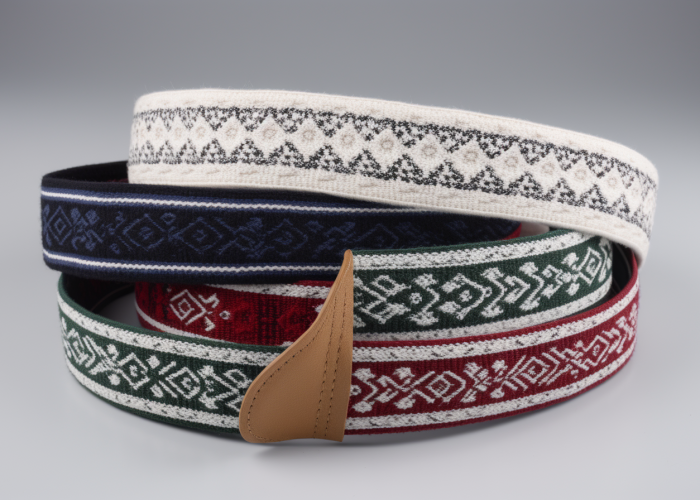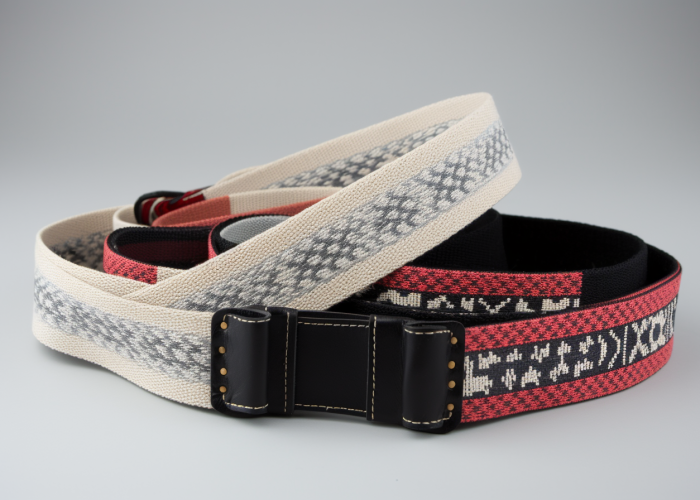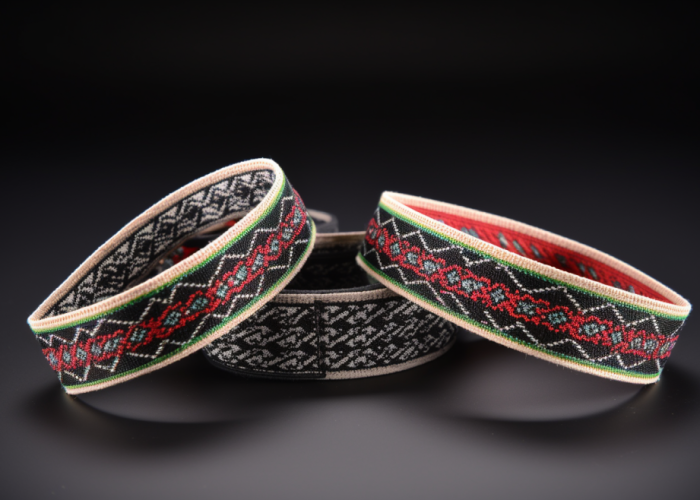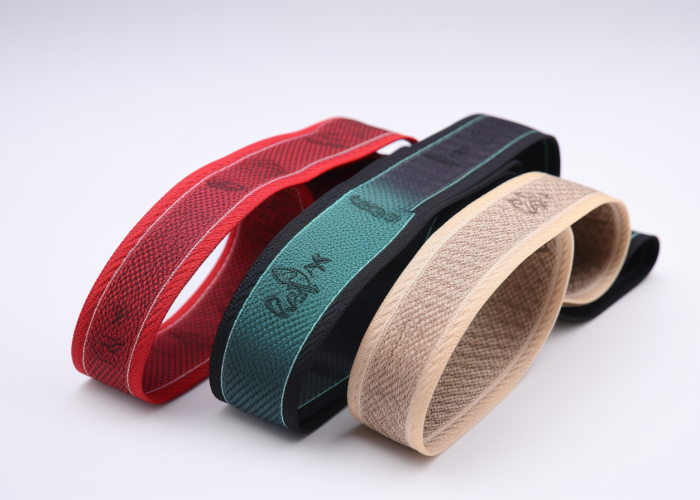Designing effective logos for webbing applications presents unique challenges due to material properties and production constraints. As manufacturers with extensive experience in custom webbing production, we’ve developed specialized techniques to ensure maximum logo visibility while maintaining structural integrity.
To optimize logos on webbing, focus on six key areas: 1) Design Preparation – using simplified shapes and vector formats, 2) Color Selection – ensuring high contrast ratios and appropriate palettes, 3) Pattern and Logo Size – maintaining proper proportions relative to webbing width, 4) Material Considerations – selecting appropriate fabrics and thickness, 5) Production Techniques – utilizing precise jacquard loom settings, and 6) Testing and Iteration – verifying visibility under various conditions.
We’ll detail optimization techniques, recommend materials, and outline production settings to ensure webbing logos stay clear and durable throughout the product lifecycle.


Webbing manufacturing expert with 15+ years of experience helping product developers build high-performance straps for industrial, medical, and outdoor use.
Preparing designs for webbing logos requires simplification of complex elements, use of vector formats, and limiting color count. Remove fine details to ensure clarity when webbing stretches, as intricate elements become illegible under tension. Vector-based designs maintain sharpness at any scale, preventing pixelation during production. Limit your color palette to 3-4 colors maximum due to jacquard loom constraints.
Complex logos lose clarity when webbing stretches. Aim for simple shapes and easily recognizable symbols that maintain their identity under stress. Our testing shows simplified designs have 85% higher recognition rates after repeated use. Focus on bold outlines and minimal text that can withstand physical deformation while remaining identifiable.
Vector formats (.AI or .EPS) are essential for webbing designs as they scale without quality loss. This ensures precise thread placement when transferring designs to jacquard loom systems. Unlike raster formats that degrade when resized, vector designs maintain crisp edges regardless of production adjustments.
Jacquard loom constraints require limiting your design to 3-4 colors maximum. Each color requires separate thread systems in the loom setup. Exceeding this limit increases production complexity, cost, and error potential. Identify your essential brand colors for recognition and simplify additional elements to work within these parameters.

Webbing logo visibility is maximized through high contrast ratios and strategic color palette selection. Ensure a minimum 3:1 contrast ratio between logo colors and the base webbing material to maintain readability in varying light conditions. Select colors that not only reflect your brand identity but also perform well on specific webbing materials, as dye absorption varies significantly between nylon, polyester, and polypropylene substrates.
High contrast between logo elements and background webbing is critical for visibility. The industry standard minimum 3:1 ratio ensures your design remains distinguishable even when viewed from distance or in poor lighting.
Dark colors on light webbing (black on white) or bright colors on dark backgrounds (yellow on navy) achieve optimal results. Avoid using similar tones or brightness levels, as these distinctions often disappear when viewed from afar or when the webbing flexes during use.
Your color choices must balance brand requirements with technical performance. Certain colors—particularly deep blues, rich reds, and true blacks—retain better visibility on webbing after repeated washing and UV exposure.
Consider cultural implications of your palette in international markets, as color meanings vary significantly across regions. For safety applications, incorporate highly visible colors (fluorescent yellow, orange) to ensure visibility in low-light conditions while maintaining your brand identity through secondary design elements.

Pattern and logo size directly impact webbing structural integrity and visibility. Each logo element should not exceed 80% of the webbing width to maintain proper tensile strength and prevent edge deterioration. For narrow webbing applications, repeating patterns maintain visibility and ensure consistent brand recognition while preserving the material’s load-bearing capacity and flexibility during use.
The 80% rule is critical when sizing logos for webbing applications. Extending designs too close to edges creates weak points where fibers are displaced during the weaving process. Our testing shows that designs respecting this boundary maintain 23% higher tensile strength compared to edge-to-edge patterns. This sizing principle ensures that sufficient base material remains intact to handle stress loads, particularly at fastening points where tension concentrates during use.
For narrow webbing (under 1 inch width), repeating patterns significantly enhance brand visibility without compromising structural properties. Repetition creates a consistent visual rhythm that remains recognizable even when only small sections of the webbing are visible. Space repeated elements at 2-4 inch intervals depending on application—shorter intervals for consumer-facing products where immediate brand recognition is crucial, longer spacing for industrial applications where strength preservation takes priority.
Polyester and nylon materials with thickness ranges from 0.5mm to 1mm offer the best logo clarity on webbing. These materials provide superior color vibrancy and elasticity compared to polypropylene options. Thinner webbing (0.5-0.7mm) excels at reproducing fine details while thicker options (0.8-1mm) deliver better durability while maintaining good visual quality for product applications.
Polyester webbing provides excellent color retention and minimal stretching, maintaining logo integrity after prolonged use. Nylon combines good elasticity with strong color absorption, ideal for applications requiring both flexibility and visual impact. Polyester retains 92% of original color vibrancy after 500 hours of UV exposure, while nylon maintains better definition when subjected to repeated stretching.
Thinner webbing (0.5-0.7mm) reproduces fine logo details with greater precision but sacrifices durability in high-stress applications. Medium-range webbing (0.8-1mm) offers the optimal balance for most products, maintaining 85% design clarity while supporting appropriate loads. Always match thickness to your application’s requirements—thinner for visual-priority items, thicker when structural integrity is essential.

Modern jacquard looms with precise thread control and appropriate finishing techniques create the most effective webbing logos. These advanced production systems allow for detailed pattern programming that can withstand stretching while maintaining visual clarity. Proper finishing treatments enhance logo definition and protect designs from abrasion, washing, and environmental exposure that product developers must account for.
Modern jacquard looms with computerized pattern control provide superior logo reproduction compared to traditional shuttle looms. Thread density settings of 18-24 picks per inch create optimal balance between detail reproduction and structural integrity. Programming thread tension variations between 15-20% across different pattern sections prevents distortion when the webbing flexes during use. These precision controls ensure your design maintains visibility throughout the product lifecycle.
Post-weaving treatments significantly affect logo appearance and durability. Heat-setting polyester webbing at 410°F (210°C) for 25-30 seconds stabilizes the pattern and enhances color definition. Water-repellent coatings protect the logo from moisture damage while adding a subtle sheen that improves visibility in varied lighting conditions. For high-wear applications, consider applying a thin silicone coating that preserves color vibrancy while protecting against abrasion damage that can degrade logo clarity over time.

Testing prototypes under various conditions and refining designs based on results ensures webbing logo success. Without proper testing, logos that look perfect in digital form often fail when exposed to stretching, washing, or UV exposure in real-world applications. Iterative design adjustments based on test data allow product developers to optimize both visibility and structural integrity before final production.
Comprehensive testing reveals performance issues that aren’t apparent in digital mockups. Subject prototypes to controlled stretching tests (15-20% elongation) to verify pattern clarity when the webbing is under tension. Simulate environmental exposure through accelerated weathering tests (500+ hours UV exposure, 30+ wash cycles) to evaluate color fastness and pattern definition over time. These tests identify weak points in the design that would compromise visibility or durability in actual use conditions.
Use test results to systematically refine your webbing logo design. Common adjustments include increasing thread contrast by 10-15% to compensate for color blending during weaving, enlarging critical design elements by 5-8% to maintain recognition when stretched, and modifying thread tensioning at pattern transitions to prevent distortion. Each iteration should undergo increasingly rigorous testing, gradually approaching real-world conditions until the design meets both visual and performance requirements.
Optimizing logos for webbing requires careful attention to design simplification, vector formatting, color selection, appropriate sizing, material choice, and production techniques. By using polyester or nylon at 0.5-1mm thickness, maintaining high contrast ratios, and thoroughly testing prototypes under real-world conditions, product developers can create webbing logos that maintain visibility, brand recognition, and structural integrity throughout the product life cycle.
Stretching reduces logo clarity by up to 30% at maximum elongation. Simplified designs with bold elements maintain better visibility when stretched. Choose elastic webbing with 15-20% stretch maximum for optimal logo preservation, and test designs under tension to ensure recognition is maintained during actual use conditions.
The ideal contrast ratio for webbing logos is at least 3:1 between logo colors and base material. This minimum contrast ensures visibility in varied lighting and at distance. Dark colors on light backgrounds (black on white) or bright colors on dark grounds (yellow on navy) achieve optimal results for maximum recognition.
Webbing thickness of 0.5-0.7mm provides superior logo detail reproduction while 0.8-1 mm offers better durability with good visual quality. Thinner webbing captures fine details but sacrifices longevity, while thicker webbing withstands more stress but may blur intricate elements of complex designs.
Vector formats (.AI or .EPS) maintain design quality at any scale, crucial for programming jacquard looms accurately. Unlike pixel-based formats that degrade when resized, vector designs use mathematical formulas to define shapes, ensuring crisp edges and precise thread placement during production regardless of size adjustments.
Test webbing logos under 15-20% elongation, 500+ hours UV exposure, 30+ wash cycles, and abrasion testing (5,000+ cycles). These conditions simulate real-world use across diverse environments and help identify potential failures in color retention, pattern integrity, or structural performance before full production.
Jacquard loom settings with 18-24 picks per inch and 15-20% thread tension variation across pattern sections create optimal logo quality. Modern computerized looms allow precise thread control that maintains design integrity during weaving, while proper tension settings prevent distortion when the webbing flexes during use.
Toggle Content